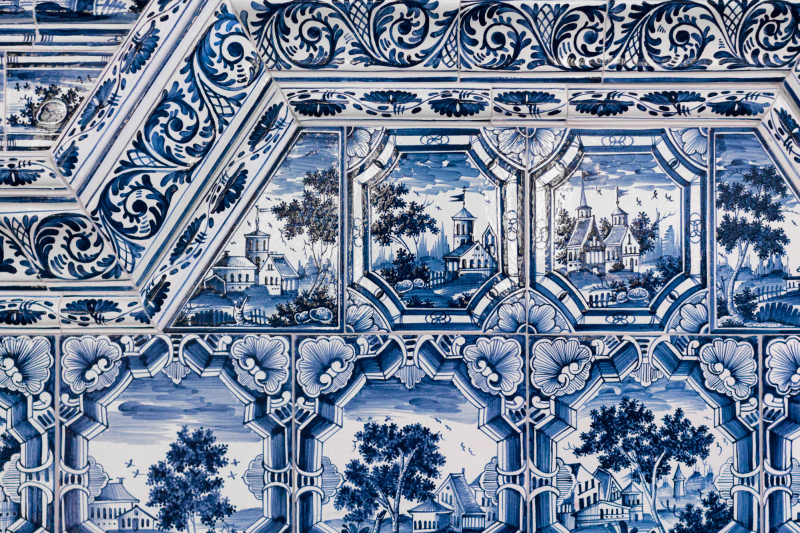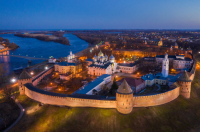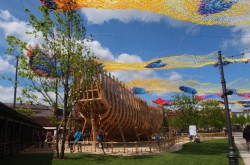Izrazets is a type of ceramic used for decoration of walls, stoves, and fireplaces. Its history goes back to the late 15th century, when Russian artisans came up with special terracotta plates – something like decorated clay pryaniki, later supplemented by the second layer, which made it possible to place them on a wall or an object. You can still see some examples of these early izraztsy – for example, in Moscow Kremlin.
This artistic tradition continued to develop and thrive over the following years – and all kinds of colorful glazed izraztsy could be found in interior and exterior design: see, for instance, this amazing 200+ year old birdy, or intricate ornaments on the walls of this Novgorod monastery and Yaroslavl church.
In the 18th century, Peter the Great sent Russian tile masters to Holland (the Netherlands), so that they could learn from their European counterparts, thus opening a new era of izraztzy. The new tiles looked more modern: they were white, flat, and decorated with paintings in blue. You can often see them on tiled stoves, such as the ones in Catherine Palace in Tsarskoye Selo.
Where to see them in St. Petersburg
-
The Russian Ethnographic Museum stores over 3,500 glazed tiles of all kinds from different regions of Russia and quite a lot of them are on display. You can also take a look at them on the museum’s website.
-
Keramarkh – a museum of architectural ceramics in the Peter and Paul Fortress.
-
Applied Arts Museum at the St.Petersburg Stieglitz State Academy of Art and Design (you need to sign up in advance).
-
All kinds of palaces and revenue houses! There are too many to list them all, but just to get you started: you can see old tiled stoves in Derzhavin Villa-Museum, Bazhanov House, Yelagin Palace, and even in common stairwells.
Nowadays, the applied art of making izraztsy may be somewhat overlooked, but at least we can still trace their development and check out the many examples of beautiful tiles from different time periods.




